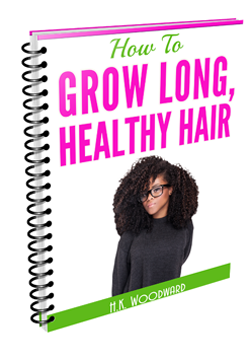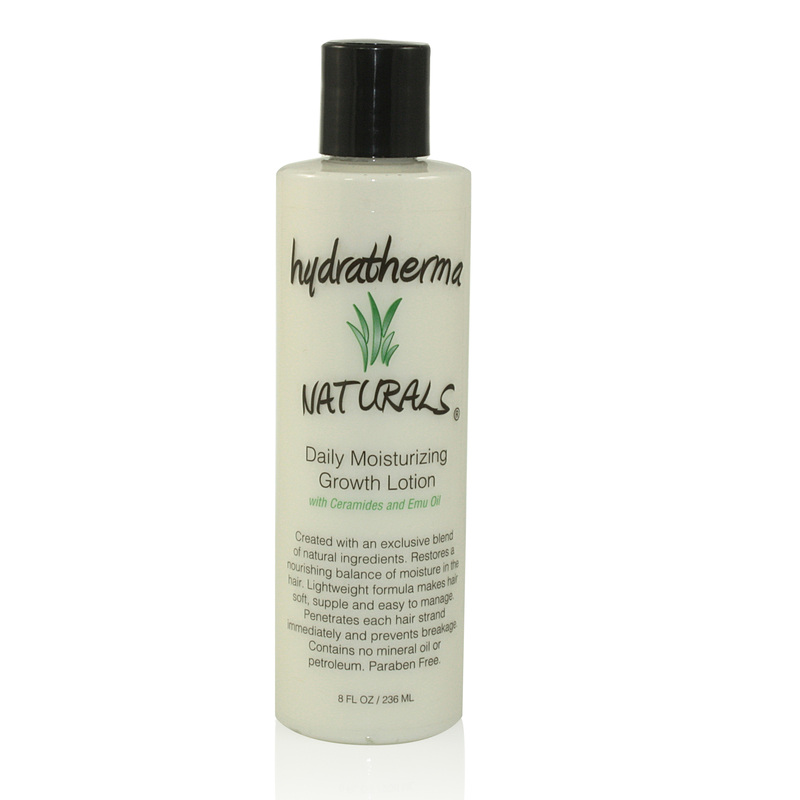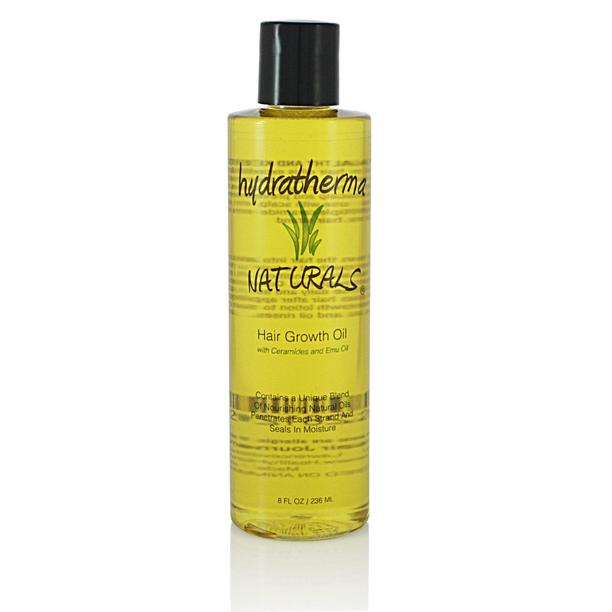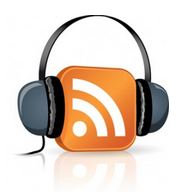 Cross section of hair Cross section of hair
Polar oils are oils that have molecules that can migrate into a hair fibre. They are attracted into the hair shaft by the protein keratin found inside the cortex.
Polar oils are effective for sealing in moisture but only for a limited time. Over time, polar oils migrate into the hair fibre so the seal is removed. On the other hand non-polar oils form a complete barrier and don't allow moisture into or out of the hair fibre. This may sound like a fabulous feature but it isn't because hair natural dries anyway. Once the hair dries a non-polar oil would make it almost impossible to re-moisturise the hair.
Polar oils offer you flexibility because whilst they can seal hair effectively they can also be rinsed off easily.
If you follow a no-poo regime or use weaker, sulfate free shampoos then you'll have no problems washing polar oils off. Petrolatums and mineral oils need the strength of a sulfate-containing shampoo to be washed off and they need to be washed off to re-moisturise hair again. 
You might also like: What Are Polar Oils? How Do They Protect Natural Hair from Hygral Fatigue? Get your FREE ebook on How To Grow Long, Healthy Natural Kinky or Curly Hair. 
So you walk into a supermarket and can't find a single sulfate free shampoo; or you find one and it's pumped so full of cleansers it's worse than a regular sulfate shampoo.
What do you do? Go for a moisturising shampoo. Moisturising shampoos, are a less harmful alternative to regular sulfate shampoos. They clean your hair without stripping it completely of its natural oils. A moisturising shampoo is gentle enough to use weekly. Of course, if you have cheap and easy access to a good quality sulfate free shampoo, then by all means go for that! However, if you don't want to pay the premium you could pick a moisturising shampoo. You might also like: How To Shop for a Sulfate Free Shampoo: Cocamidopropyl Betaine and Decyl Glucoside 
First, what is hygral fatigue?
When hair is wet, it absorbs water and swells. As it dries it releases water and shrivels. The shrinking and swelling can lead to hair damage called hygral fatigue. What is polarity? Water atoms are polar. This means that the atoms on one end have a negative charge whilst the atoms on the other end have a positive charge. Polar and non-polar atoms do not mix. Generally, oils are non-polar but some oils have polar regions on them. This polarity gives them benefits to natural hair that non-polar oils do not have. Polarity is relative - some oils have more polarity than others.
One of a polar oil's key features is that it can penetrate the hair fibre. The oil is attracted by the protein keratin inside the hair shaft.
When a polar oil makes its way into the hair fibre it reinforces it from inside and strengthens the structure. The higher the concentration of saturated fatty acids and monounsaturated fatty acids the better the ability of the oil to penetrate hair. According to the Science of Black Hair, researchers have discovered that using polar oils such as coconut oil as a pre-shampoo treatment can protect the fibre against hygral fatigue. Coconut oil and other polar oils prevents hair damage from hygral fatigue by reducing the extent to which the hair swells. However, if you choose to pre-poo, make sure to do so with a polar oil. Using a non-polar oil will make it very tough to moisturise your hair.  A damaged hair cuticle A damaged hair cuticle
I washed my hair 6 hours ago and it's still wet!
Granted, I have been wearing a beany hat all day and it is in plaits but even when it's loose my hair does take a long time to dry. The key driver of the rate at which hair dries is its porosity. Porosity refers to how easily water and other chemicals can diffuse into and out of hair. If the outer layer of the hair fibre, the cuticle, is very tightly bound and lies very flat the hair is not very porous. This type of hair is quite resistant to the entry and exit of chemicals including water. If the cuticle layer of hair has been damaged, it's weak and much more porous. Porous hair dries much more quickly than non-porous hair. Porous hair once moisturised loses that moisture much more quickly than hair that is not porous.  A damaged hair cuticle A damaged hair cuticle
Other environmental and external factors influence the rate at which hair dries:
According to The Science of Black Hair, an intensely hot blow dry for a short period of time (10 - 20 minutes) is far more damaging than much milder heat application for a longer period of time, e.g. sitting under a hooded dryer for 45 minutes. Keep these factors in mind when you want your to dry fast! 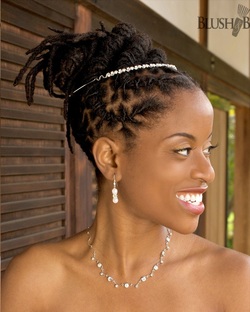
I'm sure this question has crossed your mind before.
The answer is actually very simple: 1) Strands that are bunched up together in a loc have a lower tendency to break. Hair is naturally better protected if it's together. It's easier to break a lone strand than strands of hair that are wrapped around each other. Hair in plaits or twists enjoys the same protection. However, lower breakage is only half the reason. 
2) Shed hair's aren't released.
Shedding is a natural process in hair growth. At any given point in time, 11% of the hairs on your head are in the telogen or shedding phase. Normally shedding hairs fall out as you comb and style your hair. However, if you have dreadlocks shed hairs remain stuck to the loc. This can help to give the head a much fuller look. In summary, locking your hair allows it to get on with the business of growing undisturbed by combs, brushes, blow dryers, flat irons and other styling. This allows better length retention . In addition, by not releasing shed hairs you add to the length and optical thickness of hair. 
Following our mega oil summary a couple of people have asked for good oil combinations to get growth and moisture. Here are three blends you'll want to adopt:
1. Neno Natural's Growth Stimulating Blend Mix a teaspoon of jojoba oil, argan oil plus coconut oil and massage into the scalp. To boost the impact add 2 or 3 drops of the following essential oils: cedarwood, lavender, rosemary and thyme. 2. Neno Natural's Breakage Minimising Pre-poo Treatment Mix a tablespoon of coconut oil and avocado oil. Rub onto hair then cover in a showercap for 15 to 30 minutes. You can then detangle your hair with water and a bit of conditioner or your regular detangling cream. Once the hair is detangled follow your usual wash routine. 3. Neno Natural's Moisture Retaining Blend Whether you use the LOC or LCO method to moisturise your hair, this oil blend will help you retain moisture better. Use it at the usual point in your moisturising routine. Mix 1 teaspoon of sweet almond oil and castor oil then work through hair. If you have very thick hair you can use a tablespoon of each oil. By the way, for growth stimulation you can just buy Neno Natural's Hair Growth Stimulator and massage that into the scalp.
COMPETITION CLOSED.
Following the 15% discount coupons given exclusively to Neno Natural fans Hydratherma Naturals are giving away three products! Three lucky winners will win one of each. This giveaway is open to US residents only. To enter, please answer the question at the bottom.

Learn more about Hydratherma Naturals. Visit: Facebook, Twitter.
COMPETITION CLOSED Entry question was: how many conditioners did you try before you found "the one"? If you're still looking tell us. Get your FREE ebook on How To Grow Long, Healthy Natural Kinky or Curly Hair. 
My scalp gets itchy sometimes; There are few things so annoying as an itchy scalp.
A few weeks ago I had to wake up in the middle of the night to co-wash my hair with my anti-itch solution just so that I could get some relief. Scratching too much can lead to hair loss so I hate scratching. What causes the scalp to itch? 1. Dirt including dandruff 2. Allergies, e.g. to products or even food
4. A scalp condition, e.g. seborrheic dermatitis 5. Infections, inflammation including from acne and autoimmune disorders But I thought black people don't get lice? Not true. Anyone can get lice, however, people who relax their hair are less likely to get lice because relaxer is a VERY STRONG chemical. Perhaps the incidence of lice has historically been lower for black women because of almost universal chemical relaxer usage. With all of us going natural lice rates are sure to go up! Children usually get lice from their friends at school and that's how lice might enter your home. What are the solutions to an itchy scalp? 1. Wash and condition your hair using Neno Natural's Full-proof Anti-itch Methodology 2. Find out what you are allergic to and stop eating it. If you think it's a given product, stop using the product you suspect and see if the itching goes away. Once you discover the product that your scalp 'doesn't like', stop using it, 3. If all else fails, see a dermatologist.
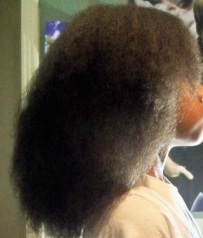
Overall, air drying natural hair is the safest option. You can't get heat damage from the hair, however, some air drying methods are better than others!
I don't have a loose curl pattern. I have kinky 4C hair on 80% of my head except for the back where it is actually wavy, it's not curly at all. I did my first wash and go in December 2012, roughly 18 months into my natural journey. When my hair was wet it was easy to moisturise and seal but by the next day my hair had shrunk very, very tightly and it was more tangled than usual. Remember that the chances for incurring breakage are highest when you're detangling very tangled hair. There's no point in keeping hair healthy by air drying and then incurring breakage due to the resulting tangles! My conclusion is that air drying hair that hasn't been styled into twists or plaits is not the best option for thick, course kinky hair. It makes handling the hair much harder two or three days later. 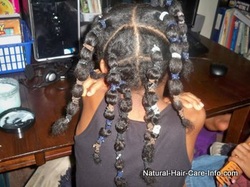
So, what is the best way to air dry?
Loose curls and fine hair:
Short hair
Thick, course or very kinky hair:
What is your experience with air drying?

I'm not afraid to trim my hair but I know many girls are. Once my hair reached shoulder length I was actually guilty of excessive trimming - I did it almost weekly because my hair was getting tangled all the time.
Trimming is important because: 1. It helps your hair look good and well looked after; It smartens you up. Unsightly hair ends are not attractive. 2. It gets rid of damaged hair. Damaged hair and split ends are more likely to get tangled with healthy hair; this extra friction encourages more hair damage and increased breakage. 3. It encourages growth. I'll be the first to admit that I don't understand how this works 100% but many people testify that taking care of hair ends helped their hair grow. I think this is likely due to better length retention. If the ends are damaged and are allowed break off at will the hair that's left also has a damaged end which in turn is susceptible to further breakage. With a pair of scissors you can cut the damage off clean leaving only healthy hair that doesn't tangle and cause friction. So there you have it; as for how often you should trim, that's an individual choice but two to three times a year seems to be common in many naturals' regimen. In addition, remember that "dusting" may mean that you can get away with trimming your hair less often. "Dusting" involves trimming so little hair that it looks like dust. This technique helps to stop split ends from happening at all. You can dust every 6 to 8 weeks. Just snip off a tiny, inconsequential amount to keep the ends healthy. You might also like: How Often Should You Be Trimming Your Natural Hair?!
|
I now blog about wealth creation - so if you have any money questions meet me there, you can do all sorts of cool things like leave me a voicemail.
By Heather Katsonga-Woodward
I was a natural hair blogger and mixtress living between London & Chicago from 2012 to 2017. I always thought I was 4C but some say 4B; images below - you decide! Heather xx Categories
All
Archives
November 2016
|



